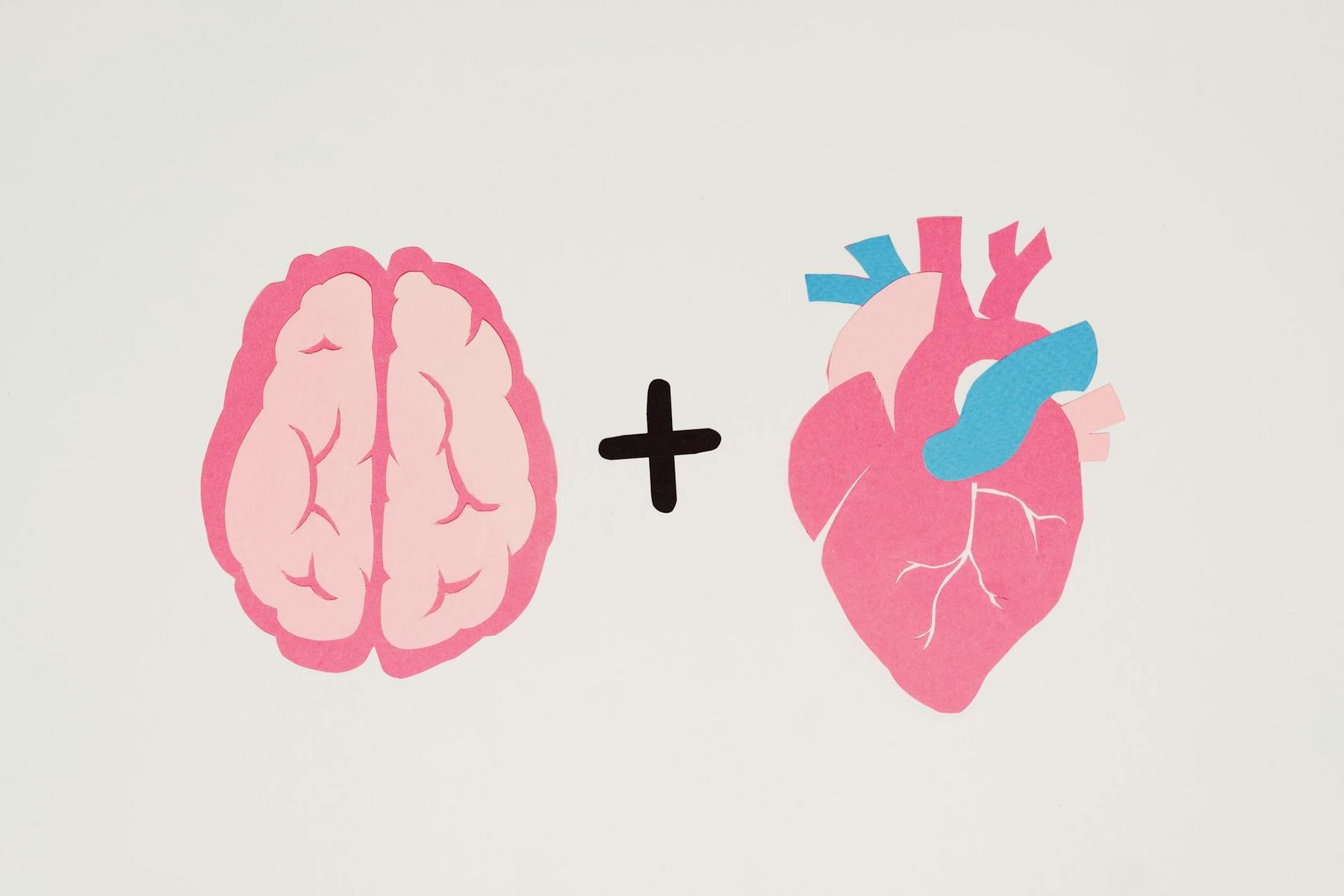The conventional eight-hour sleep block represents just one of many possible approaches to human rest. Throughout history and across cultures, sleep patterns have varied dramatically—from the medieval practice of segmented sleep to the demanding schedules of modern shift workers. As our understanding of sleep architecture deepens, questions arise about whether the traditional monophasic sleep schedule truly serves our biological needs, or whether alternative patterns might offer viable solutions for an increasingly time-pressed society. This exploration of polyphasic sleep examines the science, practicality, and potential implications of restructuring one of our most fundamental biological processes.
What Is Polyphasic Sleep and How Does It Differ From Normal Sleep?
Polyphasic sleep refers to any sleep pattern involving multiple sleep episodes throughout a 24-hour period, rather than the single consolidated sleep block typical in industrialised societies. The term derives from the Greek “poly” (many) and “phase” (stages), describing sleep divided into several distinct periods.
Most adults in contemporary Western societies follow a monophasic sleep pattern—one continuous sleep period, typically at night. This consolidation represents a relatively recent development in human history, largely influenced by industrialisation, artificial lighting, and modern work schedules. In contrast, polyphasic sleep schedules deliberately fragment rest into multiple episodes, potentially ranging from two sleep periods (biphasic) to six or more (extreme polyphasic variations).
The fundamental distinction lies in sleep distribution rather than total sleep duration. Whilst monophasic sleep concentrates approximately 7-9 hours of rest into a single nocturnal block, polyphasic patterns disperse sleep across the day. This reorganisation affects sleep cycle architecture—the natural progression through light sleep, deep sleep, and rapid eye movement (REM) phases—which typically occurs in 90-minute cycles during conventional sleep.
Sleep architecture becomes significantly altered under polyphasic schedules. The human body normally requires several complete sleep cycles to achieve restorative benefits, with deep sleep dominating early cycles and REM sleep increasing in later cycles. Polyphasic patterns compress or fragment these cycles, fundamentally changing how the brain transitions between sleep stages.
What Are the Main Types of Alternative Sleep Patterns?
Alternative sleep schedules exist along a spectrum, from modest modifications to conventional sleep through to radical restructuring of rest periods. Each pattern presents distinct characteristics, theoretical advantages, and practical challenges.
Biphasic Sleep
The most moderate departure from monophasic sleep, biphasic patterns involve two sleep periods. The siesta pattern combines a shorter night sleep (typically 5-6 hours) with an afternoon nap (20-90 minutes), whilst segmented sleep divides night-time rest into two distinct blocks separated by 1-3 hours of wakefulness. Historical evidence suggests segmented sleep was common in pre-industrial Europe, where individuals would sleep, wake for quiet activities, then return to a second sleep period before dawn.
Everyman Schedule
This intermediate polyphasic approach maintains a core sleep period (typically 3-4 hours) supplemented by several 20-minute naps distributed throughout the day. Variations include Everyman 2 (one core plus two naps), Everyman 3 (one core plus three naps), and Everyman 4 (one core plus four naps). The core sleep period theoretically preserves some conventional sleep cycle structure whilst reducing total sleep time through strategic napping.
Dymaxion Pattern
Attributed to inventor Buckminster Fuller, this extreme schedule involves four 30-minute naps spaced evenly every six hours, totalling just two hours of daily sleep. This pattern represents one of the most aggressive reductions in total sleep time, though documented successful long-term adherence remains exceptionally rare.
Uberman Sleep Schedule
Perhaps the most demanding polyphasic pattern, the Uberman schedule eliminates all core sleep, instead employing six 20-minute naps distributed evenly across the 24-hour cycle (one nap every four hours). Total sleep time approximates just two hours daily. This schedule demands rigid adherence, as missing even a single nap can trigger severe sleep deprivation.
| Sleep Pattern | Total Sleep Time | Sleep Episodes | Core Sleep | Flexibility | Difficulty Level |
|---|---|---|---|---|---|
| Monophasic | 7-9 hours | 1 | Full night | High | Low |
| Biphasic (Siesta) | 6-7 hours | 2 | Shorter night + nap | Moderate | Low-Moderate |
| Biphasic (Segmented) | 7-8 hours | 2 | Two night blocks | Low | Moderate |
| Everyman 2 | 4.5-5.5 hours | 3 | 3-4 hours + 2 naps | Moderate | Moderate |
| Everyman 3 | 4-5 hours | 4 | 3-3.5 hours + 3 naps | Low | Moderate-High |
| Dymaxion | 2 hours | 4 | None | Very Low | Extreme |
| Uberman | 2 hours | 6 | None | Very Low | Extreme |
Can Polyphasic Sleep Schedules Actually Work for Most People?
The viability of polyphasic sleep remains deeply contested within sleep research communities. Whilst certain populations naturally adopt biphasic patterns—notably in cultures maintaining siesta traditions—extreme polyphasic schedules lack robust scientific validation for long-term health and performance.
Human circadian biology presents formidable obstacles to radical sleep schedule modifications. The body’s master clock, located in the suprachiasmatic nucleus, orchestrates numerous physiological processes in roughly 24-hour cycles synchronised primarily by light exposure. Sleep pressure accumulates during wakefulness through adenosine buildup, creating homeostatic drive for consolidated rest. These intertwined systems evolved to support consolidated nocturnal sleep, making sustained polyphasic adherence physiologically challenging.
Research examining extreme polyphasic schedules reveals concerning patterns. Studies of individuals attempting ultra-short sleep cycles demonstrate performance decrements similar to sleep deprivation, including impaired cognitive function, reduced reaction times, and mood disturbances. The brain appears unable to achieve adequate deep sleep and REM sleep within severely compressed timeframes, regardless of scheduling optimisation.
Conversely, moderate biphasic patterns show more promising outcomes. Mediterranean and Latin American cultures maintaining siesta traditions demonstrate that splitting sleep into two periods can prove sustainable when culturally supported and properly timed. The key distinction lies in maintaining adequate total sleep duration rather than attempting dramatic reduction through schedule manipulation.
Individual variation in sleep needs further complicates polyphasic viability. Genetic factors influence whether individuals are natural short sleepers (genuinely requiring less rest) or average sleepers (needing standard durations). True short sleepers represent approximately 1-3% of the population—carrying specific genetic variants—whilst most people claiming short sleep needs actually accumulate chronic sleep debt.
Environmental and social factors create additional barriers. Modern obligations—employment schedules, family responsibilities, social commitments—rarely accommodate the rigid timing demands of extreme polyphasic patterns. The Uberman schedule, for instance, requires waking every four hours indefinitely, including overnight, making participation in conventional activities virtually impossible.
What Does Research Reveal About the Health Implications?
Scientific investigation into alternative sleep patterns yields mixed findings, with outcomes varying dramatically based on pattern extremity and implementation duration.
Sleep architecture studies demonstrate that the human brain requires sufficient time in specific sleep stages for optimal functioning. Deep slow-wave sleep, concentrated in early sleep cycles, facilitates physical restoration, immune function, and memory consolidation. REM sleep, increasing in later cycles, supports emotional regulation, creativity, and complex learning. Severely fragmented sleep patterns risk inadequate time in these crucial stages, potentially compromising both cognitive performance and physical health.
Research examining shift workers—who involuntarily experience disrupted sleep patterns—provides cautionary insights. Chronic circadian misalignment associates with increased risks of metabolic disturbances, cardiovascular concerns, and mood disorders. Whilst not directly equivalent to intentional polyphasic schedules, these findings highlight risks inherent in fighting biological rhythms.
Cognitive performance studies reveal nuanced outcomes. Short-term adaptation to moderate biphasic schedules may occur without significant performance decrements, particularly when total sleep remains adequate. However, extreme polyphasic patterns consistently demonstrate impairments in complex cognitive tasks, decision-making, and sustained attention. The brain essentially operates in a state of chronic sleep restriction, regardless of schedule optimisation attempts.
Mental health considerations warrant particular attention. Sleep deprivation significantly affects emotional regulation, stress response, and psychological wellbeing. Individuals attempting extreme polyphasic schedules often report mood instability, increased irritability, and difficulty managing daily stressors. These effects may persist even after subjective adaptation occurs, as the brain continues operating under physiological stress despite reduced conscious awareness of sleepiness.
The adaptation period presents additional risks. Transitioning to polyphasic schedules typically involves days or weeks of profound sleep deprivation whilst the body attempts adjustment. During this phase, individuals experience severe impairments in judgement, coordination, and cognitive function—raising safety concerns for activities requiring alertness, such as driving or operating machinery.
Long-term sustainability remains largely unexamined in rigorous research contexts. Anecdotal reports of successful long-term polyphasic sleep exist, but lack controlled verification and may reflect either genuine short-sleeper genetics or gradual increases in total sleep time beyond initially reported levels.
How Can Sleep Quality Be Optimised Regardless of Pattern?
Whether maintaining conventional monophasic sleep or exploring alternative patterns, fundamental sleep hygiene principles remain universally applicable and evidence-based.
Environmental optimisation creates conditions conducive to restorative rest. Sleep spaces should be cool (approximately 15-19°C), dark, and quiet. Light exposure powerfully influences circadian timing—morning bright light exposure helps anchor biological rhythms, whilst evening dimming facilitates natural melatonin production. Minimising blue light from electronic devices in the hours before sleep supports this natural transition.
Consistency in sleep-wake timing strengthens circadian entrainment. Even on weekends or days off, maintaining regular sleep and wake times helps stabilise the body’s internal clock. This principle applies equally to polyphasic schedules, where precise timing becomes even more critical for maintaining sleep architecture.
Physical activity demonstrates clear benefits for sleep quality, though timing matters. Regular exercise improves sleep depth and reduces sleep onset latency, but vigorous activity too close to bedtime may prove counterproductive due to elevated arousal and core body temperature.
Pre-sleep routines signal the transition towards rest. Activities that promote relaxation—reading, gentle stretching, meditation—help separate daytime activities from sleep periods. Consistency in these routines strengthens their effectiveness as sleep cues.
Dietary considerations influence sleep quality. Large meals, caffeine, and alcohol near bedtime can disrupt sleep architecture. Caffeine’s half-life of 5-6 hours means afternoon consumption may still affect evening sleep, whilst alcohol, despite its sedative properties, fragments sleep and suppresses REM stages.
For those exploring biphasic patterns, strategic nap timing proves crucial. Naps timed in early-to-mid afternoon (approximately 1-3pm) align with natural circadian dips in alertness and minimise interference with night-time sleep. Nap duration also matters—20-minute power naps avoid deep sleep inertia, whilst 90-minute naps allow complete sleep cycle progression.
Understanding Individual Sleep Needs and Realistic Expectations
Human sleep requirements exist along a continuum, influenced by genetics, age, health status, and activity levels. The notion that everyone can successfully reduce total sleep time through schedule manipulation contradicts fundamental sleep science. Whilst true short sleepers exist, they represent a tiny minority with specific genetic variants—not a state achievable through training or willpower.
Quality sleep metrics extend beyond hours spent unconscious. Sleep efficiency (the percentage of time in bed actually asleep), sleep continuity (minimal night-time awakenings), and balanced time across sleep stages collectively determine restorative value. An individual obtaining seven fragmented hours achieves less restoration than someone sleeping six continuous hours with complete sleep cycles.
Age-related variations in sleep patterns deserve recognition. Infants and young children naturally exhibit polyphasic sleep until circadian systems mature. Adolescents experience shifted circadian timing, preferring later sleep and wake times. Older adults often return to more biphasic patterns, with lighter, more fragmented night-time sleep supplemented by daytime napping. These natural variations differ substantially from forced schedule manipulation.
Social and occupational contexts significantly influence sleep pattern feasibility. Cultural acceptance, workplace flexibility, and family dynamics all affect whether alternative schedules can be sustained. Individuals considering polyphasic patterns must evaluate not only physiological capability but practical sustainability within their life circumstances.
Moving Beyond Sleep Mythology Towards Evidence-Based Practices
The appeal of polyphasic sleep often stems from promises of increased productive waking hours—effectively “hacking” biological limitations. This framing misrepresents sleep as lost time rather than recognising it as essential biological maintenance. Sleep serves critical functions beyond simply preventing fatigue, including memory consolidation, immune system regulation, metabolic hormone balance, and brain waste clearance. These processes cannot be expedited or eliminated through schedule reorganisation.
Historical examples of polyphasic sleep, whilst interesting, must be contextualised appropriately. Pre-industrial segmented sleep occurred in darkness-dominated environments vastly different from contemporary contexts. Claims about famous polymaths or inventors thriving on minimal sleep often lack verification or conflate work habits with sleep patterns. Extreme discipline or work ethic should not be confused with physiological sleep reduction.
Contemporary interest in polyphasic sleep reflects broader cultural tensions around time scarcity and productivity optimisation. However, attempting to reduce biological necessities rarely yields sustainable solutions. Enhancing waking productivity through improved sleep quality typically proves more effective than attempting quantity reduction.
For individuals genuinely constrained by circumstances—such as new parents, shift workers, or caregivers—accepting temporary sleep disruption as unavoidable differs from voluntarily adopting extreme schedules. In such contexts, maximising sleep quality during available opportunities, maintaining consistency where possible, and planning for recovery sleep becomes paramount.
Professional guidance proves valuable when evaluating sleep concerns or considering substantial schedule changes. Sleep specialists can assess individual sleep architecture, identify potential sleep disorders, and provide evidence-based recommendations tailored to specific circumstances rather than generic prescriptions.
Is polyphasic sleep healthier than normal sleep patterns?
Current scientific evidence does not support extreme polyphasic schedules as healthier alternatives to conventional sleep. Moderate biphasic patterns that maintain adequate total sleep duration may be sustainable, but extreme reductions in sleep time are associated with health and performance risks.
How long does it take to adapt to a polyphasic sleep schedule?
Adaptation periods can vary from several days to several weeks depending on the schedule’s extremity. However, this adaptation often represents habituation to chronic sleep deprivation rather than a true physiological adjustment.
Can polyphasic sleep improve productivity and save time?
While polyphasic schedules may theoretically increase waking hours, the quality of those hours often suffers. Research shows that reduced sleep quality can lead to decreased cognitive performance, creativity, and decision-making ability, ultimately undermining productivity.
What are the biggest challenges of maintaining polyphasic sleep?
The challenges include rigid nap timing that conflicts with daily responsibilities, significant physiological obstacles due to circadian rhythms, and the risk of severe sleep deprivation if any sleep episode is missed.
Are there any situations where biphasic sleep patterns make sense?
Biphasic sleep can be suitable for individuals in cultures that support an afternoon rest, people with naturally split sleep preferences, or those with flexible schedules. The key is ensuring that total sleep time remains adequate, typically around 7-9 hours for adults.













